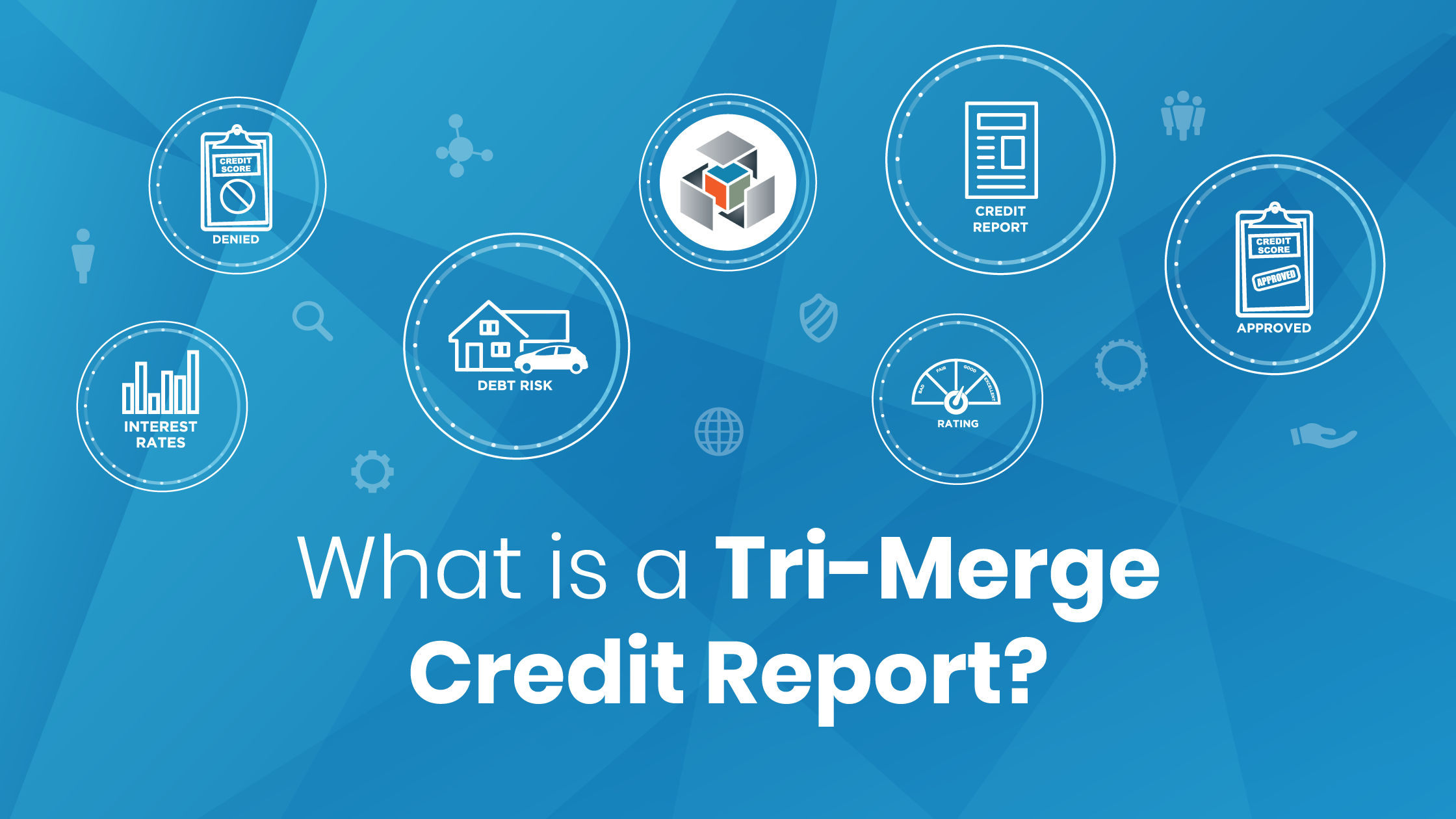Comparing Tax Transcript Retrieval: IVES 4506-C v. Halcyon’s Tax Wallet
Income verification continues to be one of the most critical—and complex—steps in the mortgage underwriting process. Whether you're working...
A tri-merge credit report is a consolidated report that aggregates the data from all three credit bureaus. The consolidated report allows lenders to review one report instead of referencing three separate credit bureaus.
Let's dive deeper to answer important questions:
A tri-merge credit report consolidates data from the three credit bureaus into one report. The three credit bureaus in the United States are Experian, Equifax, and TransUnion. All three bureaus generate credit reports on consumers, and each one has its own unique data as well as standard overlapping data.
When deciding on a loan application, lenders use a tri-merge credit report because it provides a detailed analysis of the applicant's credit history. The data includes information on an applicant like missing payments, foreclosures, or bankruptcies. The amount of both positive & negative information reported is considered when a lender decides (underwrites) on an application. Lenders opting to use a tri-merge can save time, and the borrower benefits because three sources assess their credit.
Most of the time, these reports are used by mortgage lenders. Tri-Merge reports are rarely sold to the average consumer. If an applicant is working with a broker or a mortgage lender, they can request a copy of their tri-merge report.
Unlike the individual bureau’s reports, the tri-merge credit report provides more use to the lender. The report provides the pertinent information to determine creditworthiness. Just as each bureau may have different scoring systems, each lender has specific qualifications for approving a loan even if they are not disclosed to consumers.
If your borrowers are worried about their reports and scores, suggest that they check their scores. Under federal law, a consumer can request a credit report for free once a year. This way, the consumer can review their information to manage their debt or detect security risks like potential identity fraud.
Yes. Since this report is primarily ordered when an applicant is applying for credit -like a mortgage loan- the credit inquiry is considered a hard-pull. A hard-pull may negatively impact a borrower's score, depending on the number of hard-pulls in their recent past.
No. It's important to note the difference between the three credit bureaus’ scores and a FICO credit score. FICO scores are an additional credit scoring system created by the Fair Isaac Company.
To compete with the FICO score, the credit bureaus created the VantageScore. This score is all three bureaus agreeing on a score to assign to each consumer, which is the closest thing to a tri-merge “score.” This is not an average of the three scores but rather a new formula entirely. VantageScore may be the determining score system rather than taking an average of each separate bureau.
Each bureau uses a different scoring model because they compile different information on a consumer’s credit accounts that the others may not. They also use their own formulas for calculating a score.
The different scores can sometimes be intimidating for borrowers because three bureaus mean three various reports and three different scores, but that's not always the case. Most of the time, all of the scores will be similar. It's important to note for the applicant that if they generally have healthy credit, the reports will reflect it as so.
Understanding the function for tri-merge reports, knowing who can access it, and clearing any misconceptions for borrowers are essential best practices for lenders who need to use this type of data when screening applicants. Click here for more information about our Tri-Merge Credit Report.
Informative Research, a Stewart Company, is a leading technology platform that delivers data-driven solutions to the lending community. The solutions provider currently serves over 3,000 mortgage companies, banks and lenders throughout the United States. The company is recognized for streamlining the loan process with their straightforward service model, progressive solutions and cutting-edge technology.
The right partner makes all the difference. With IR, you gain smarter credit and verification solutions, a team that has your back, and a strategy that grows with you.
/Blogs/2025%20Blog%20Posts/2025-09-IVES%204506-C%20vs.%20Halcyon%20Tax/IR_Blog--IVES-4506-C-vs-Haylyon-Tax-Wallet.png)
Income verification continues to be one of the most critical—and complex—steps in the mortgage underwriting process. Whether you're working...
/Blogs/2025%20Blog%20Posts/2025-09-Maximize%20Your%20Existing%20VOA%20Connection/IR_Blog-Understanding-the-cost-of-tax-transcript-retrieval.png)
Reducing borrower friction while maintaining compliance is a constant challenge. Lenders are under pressure to move faster, keep costs down, and...
/blogs/2024-12-AccountChek%20Tips%20and%20Tricks/AccountChek%20Tips%20%26%20Tricks.png)
Turning Bank Data Into Loan Approvals AccountChek Verification of Assets doesn’t just check bank balances–it can also help lenders verify rental...
